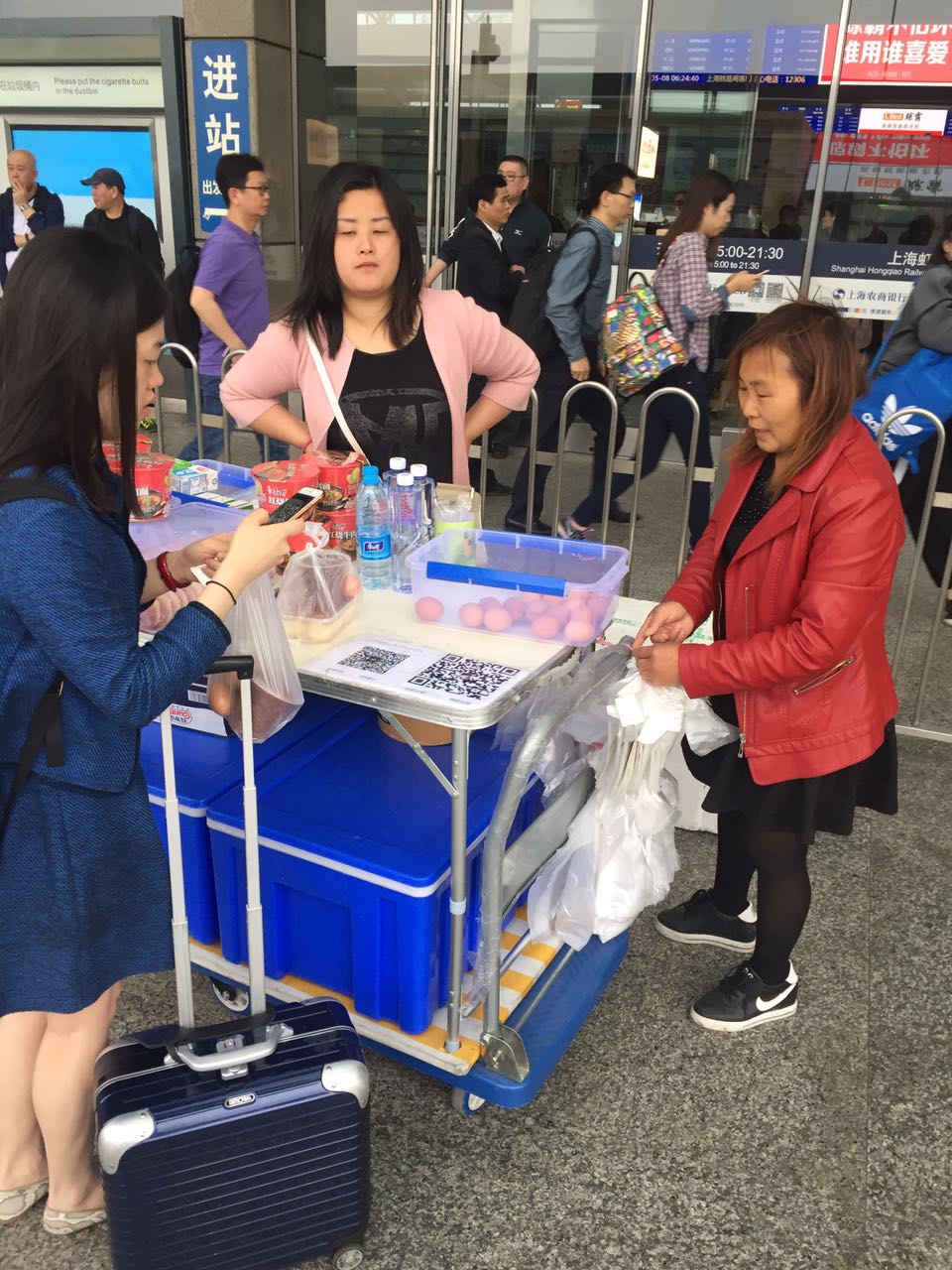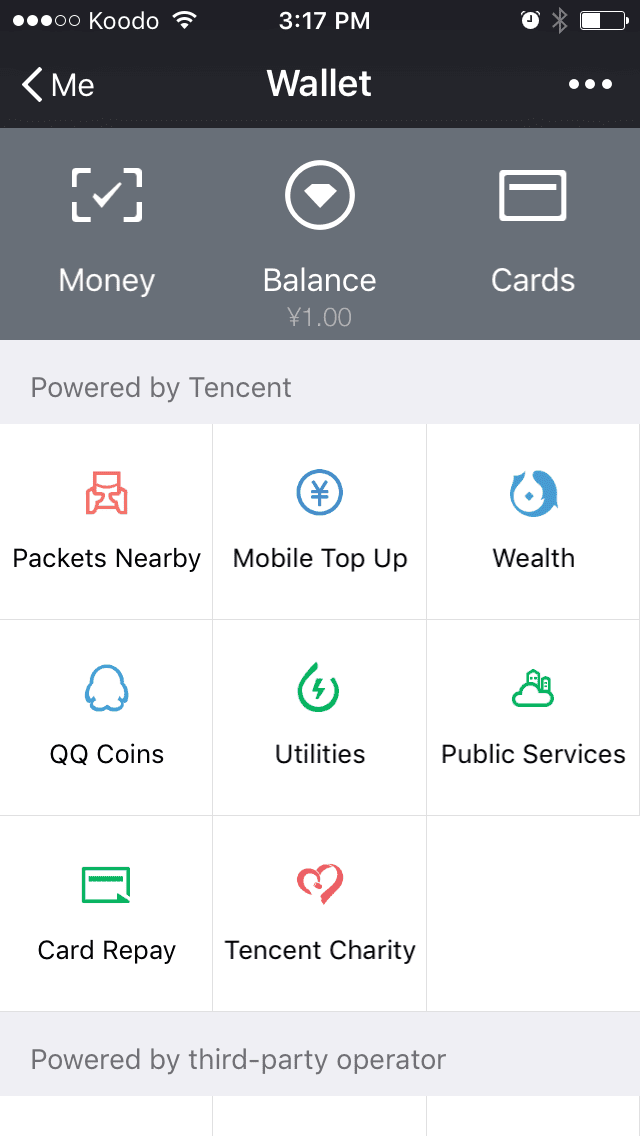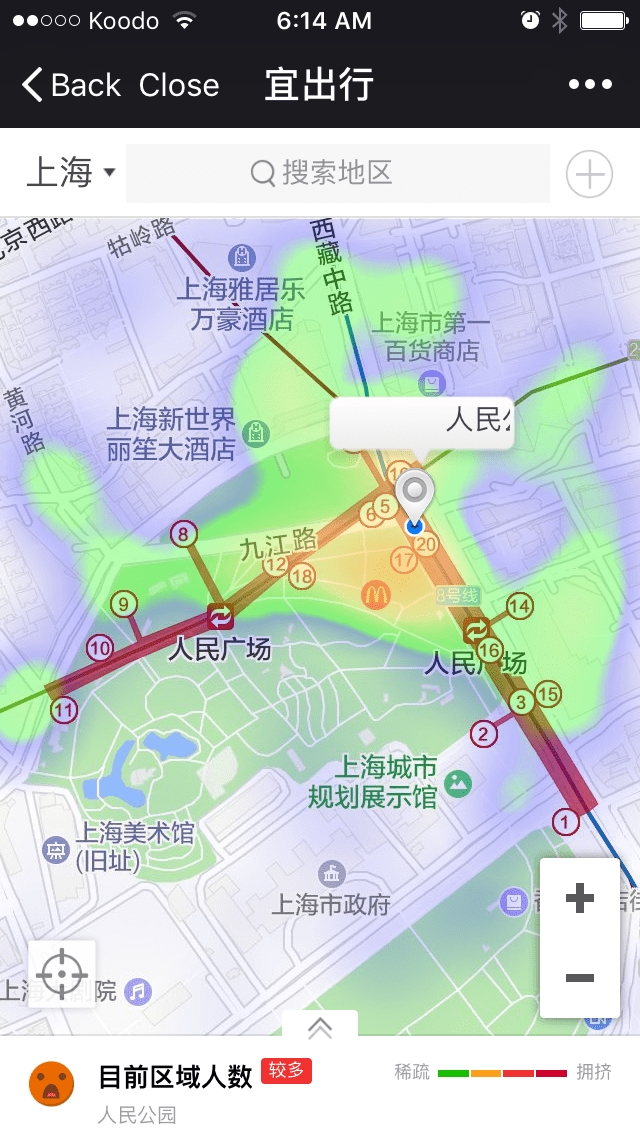WeChat Smart Cities

If you ask any Chinese smartphone user today: what is the most important app on their phone, most likely you’ll hear “WeChat!”
WeChat is a social media application released by Tencent in 2011. By 2016, WeChat’s monthly active user number had reached 800 million. What it does is way beyond “chat”. It integrates almost all the services you might need in a city at your fingertips: from booking train/flight tickets to calling a taxi, scheduling doctor’s appointments, paying utility bills, paying traffic tickets, or delivering Chinese New Year “red envelopes” (cash gifts). At the center of it is a QR code that connects the app to the user’s personal ID and his/her bank account. Today people can practically live in the city without any cash. Even street vendors (and apparently homeless people) can accept payments / offers through WeChat by providing their own QR code.

In many Chinese cities, WeChat has become an important media connecting people with their surroundings. One can hardly hail a cab by standing at a prominent intersection, as all empty cabs are on the way to their next customer who has placed the order through the app. Few people have the patience to wander around to find an interesting-looking restaurant. They instead select restaurants from the app after reading the reviews or collecting a few coupons. In business meetings, instead of exchanging business cards, people pull out their smart phone and scan each other’s WeChat QR code. Naturally, for businesses, WeChat has also become the most important marketing media. New or small businesses can very quickly establish their brand and group of loyal customers if they can set up a well-circulated WeChat account. There are numerous WeChat marketing agencies who are helping various business to achieve their goals.

Of course WeChat does not only deliver information and services to its users, but also collects information from them. Who they are, where they have been, at what time etc… The massive amount of users (almost 70% of entire Chinese population) are sending their own information including their activities online as well as GPS locations to WeChat all the time. As of April 2017, WeChat is ranked the 5TH largest social network in the world, after Facebook, Whatsapp, Youtube and Facebook Messenger. But given how many different services are integrated with this one particular app, and how concentrated the users are geographically, WeChat may well own the largest database in the world recording how people use their cities.
One function that is free for everyone on WeChat is called a “heat map”. It shows in real time how crowded a scenic spot is and provides guidance when its users are deciding where to go for leisure activities. For a small cost, a business owner can also purchase information around their (potential) business venue: for instance, foot-traffic at different times of the day, demographic information about type of users etc. There are many privacy concerns to be raised here. But aside from those, is WeChat turning Chinese cities into “Smart Cities” way ahead of other cities in the world?

It is not yet clear how WeChat is changing Chinese cities physically. But it has certainly started to. Transportation-wise, the recent boom of app-based bicycle renting systems like “Mobike” is bringing the long lost bike culture back the former kingdom of the bicycle. It is successfully raising awareness among government agencies of the importance of bike infrastructure in cities like Shanghai. Given the speed that Chinese cities were building their infrastructure in the past, we can probably expect a quick turn-around in bike-infrastructure very soon.
In the retail world, the traditional format of retail, department stores — which typically anchor major commercial nodes in the city — are barely surviving. On the other hand, “Conceptual Malls”, like Joy City, with an emphasis on transferring popular online-culture into physical form, are becoming the new formula of retail development.
Looking ahead, are we going to see the civic service functions disappearing from the currently over-scaled Civic Centres of most Chinese cities? And what will those spaces convert into?
At what cost are we gaining the convenience of WeChat and similar apps? As we grow to rely on this new urban infrastructure, will the shape and physical infrastructure of our cities need to adapt? A useful analogy is the rise of cars and highways in the mid of 20th century which facilitated sprawl and the greater segregation of uses. Cities around the world are now trying to mitigate those impacts as we rediscover the value of human-scale environments combined with a vibrant mix of uses and densities.
What are the long-term urban impacts of WeChat and other social media we might need to mitigate? How might they impact the economic benefits of physical centralization, mixed use and density in urban areas? Will our appreciation for authentic urban experiences be diminished, in favour of the instant gratification of pre-packaged themed experiences? Might these shifts contribute to a significant down-sizing of certain physical infrastructure in our cities? Will our cities be more vulnerable to hacking and other collateral damage?
The social media genie is out of the bottle, so going back is not an option. Hopefully the convenience and efficiency brought by WeChat will free up our dependence on mechanical infrastructure while giving us time and space to strengthen our relationships with our physical urban environment.
Want to learn more about WeChat? Watch these explainer videos from The Wall Street Journal and Bloomberg.